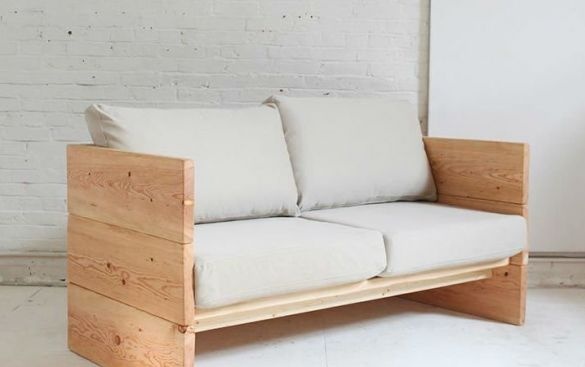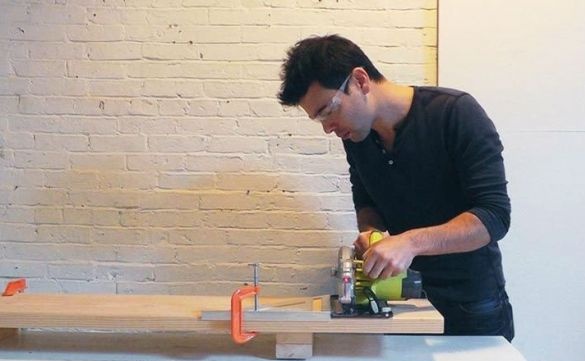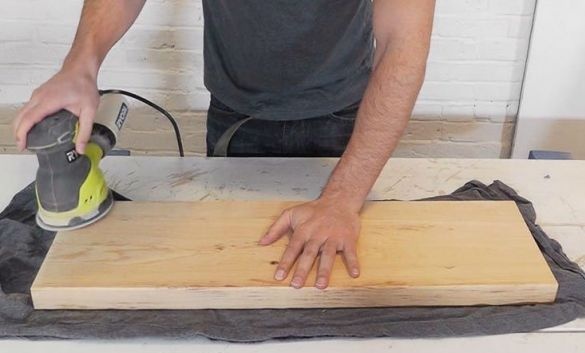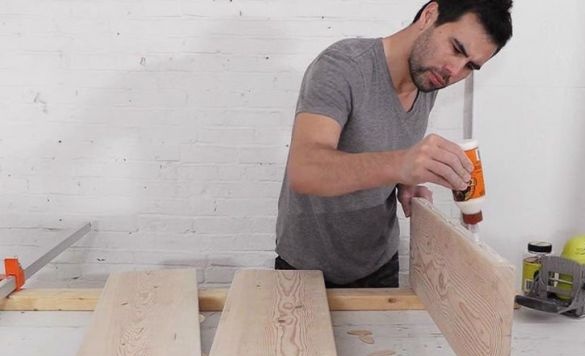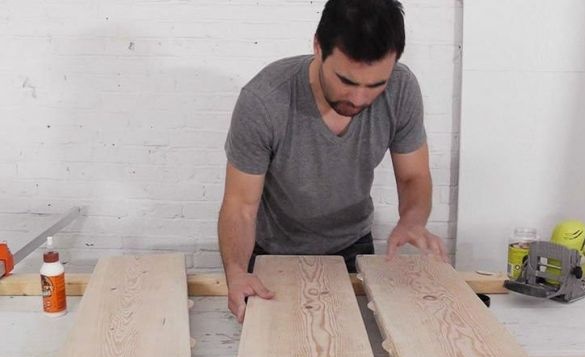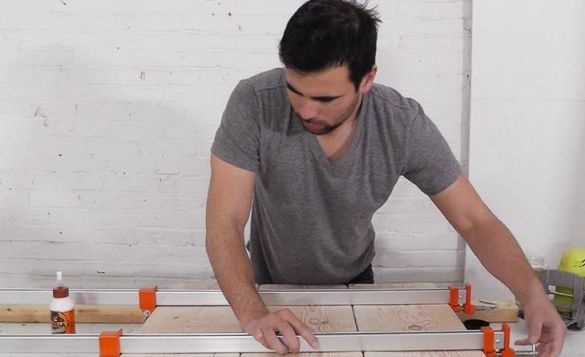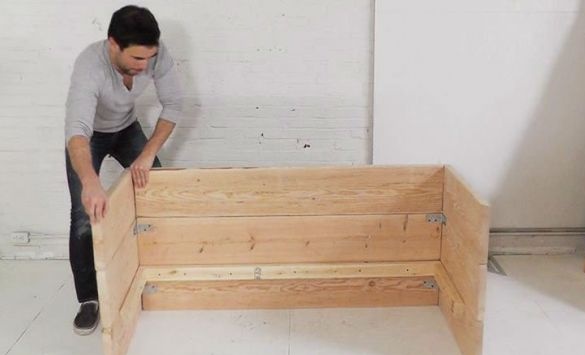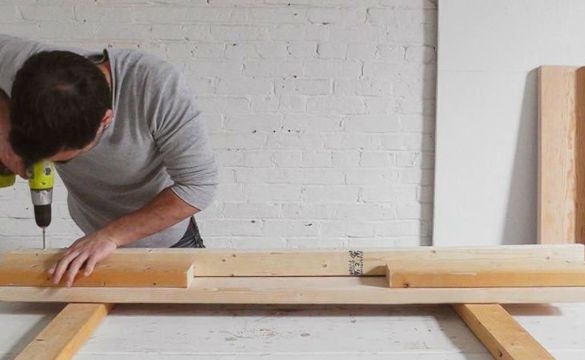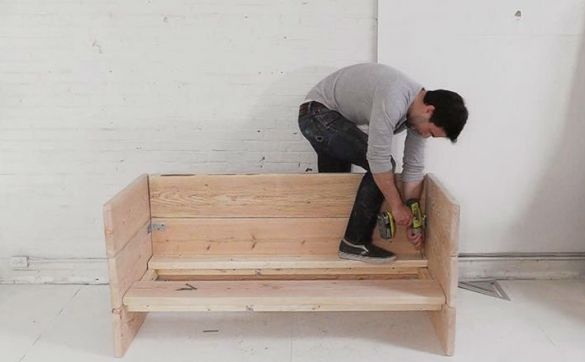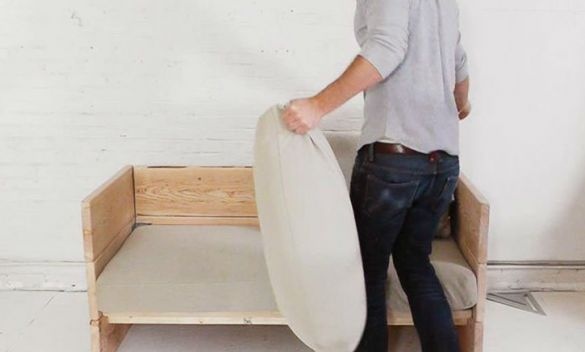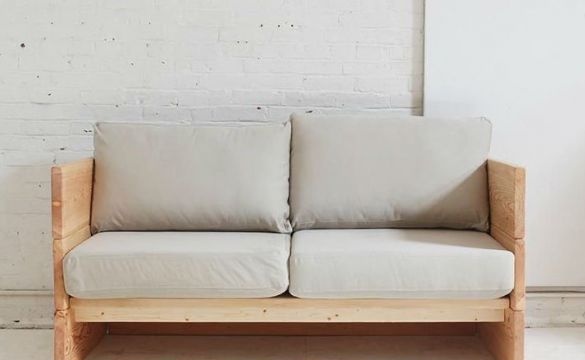Minimalistic and simplified elements. of furniture They are good because they easily fit into any interior. The sofa presented in this article is a wonderful confirmation of this. Cushion covers can always be replaced, and the sofa itself can be repainted at the first opportunity, so that it harmoniously harmonizes with the decor.
The project is easy to implement and, first of all, it will appeal to those who are not used to spending a couple of monthly salaries to buy a new sofa in a furniture store.
So, get to work and try to save a little family budget.
To make a sofa, you will need:
1. Materials:
- boards (no new - feel free to take used);
- self-tapping screws of different lengths;
- metal furniture corners;
- carpentry glue;
- furniture glue for gluing sintepon;
- foam rubber;
- synthetic winterizer or batting (you can do without them);
- strong threads;
- fabric for fitting sofa cushions (better furniture, but not necessary).
2. Tools:
- drill;
- screwdriver;
- a hacksaw for wood (we used a miter saw);
- roulette;
- pencil or marker;
- a rag;
- clamps;
- sandpaper (large and small);
- scissors;
- a sharp knife for cutting foam;
- a sewing machine (it doesn’t hurt, but you can do without it).
Step 1. The dimensions of the constituent elements of the sofa (side parts, frame, back) you can reduce or increase, based on their own preferences. Therefore, mark the boards that you managed to find and cut them into marks. We will need boards in order to make the back, sides and the base of the sofa for pillows.
Step 2 If you are using new planed sawn timber, just sand the edges of the cuts and go over the surface with sandpaper to smooth out the bumps. Start with coarse paper and only then sand with fine-grained sandpaper.
If the boards are old and darkened, they must first be planed and only after that proceed to grinding.
Step 3 Fabricate the back and sides of the sofa, connecting the parts using wood glue and clamps.
Step 4 Having glued the boards, strengthen them with slats along the entire length, using self-tapping screws. In the future, they will serve as a support for the foundation of the sofa. Allow the glue to dry completely during the day.
Step 5 Having thus prepared all the elements, proceed with the assembly of the entire structure. Connect the sides and back with metal furniture corners using self-tapping screws.
Step 6 With the help of self-tapping screws, fasten the base pieces to the rails.
Step 7 If you wish, go with sandpaper along the edges and corners of the wooden parts to slightly round them.
Step 8 The sofa is almost ready and we only have to process the surface of the wooden elements. To do this, you can:
- use paint on wood. Apply a coat of paint, wait for it to dry completely and treat the surface with fine-grained emery paper until micro-scratches form. Repeat the procedure once or twice to give the coating the necessary resistance to external influences. It is not necessary to grind the last coat of paint. Instead, use varnish to add a finishing touch to the sofa;
- just use varnish, which will protect the surface of the tree from mechanical damage, but preserve its texture;
- cover the surface of the wood with toner, which is usually used to process wooden facades. It favorably tones the wood, but at the same time preserves its texture and gives it water-repellent and other properties necessary for intensive use;
- Use linseed oil or natural drying oil. When using oil, the tree acquires a very rich, deep color, as well as some water-repellent properties. However, oil will not protect the surface of the sofa from mechanical damage. This must be taken into account.
For example, we left the wood texture intact and used linseed oil. The result is to evaluate you.
Step 9 We turn to the soft details - sofa cushions. For their manufacture, we need furniture fabric, furniture foam, synthetic winterizer or batting to give additional volume and softness to details, durable threads and necessary tools.
Decide how much fabric you need (do not forget to add a little to the allowance), make calculations and draw a pattern on paper, then transfer it to the fabric and cover. Stitch seams manually or on a sewing machine, leaving the lower back hole un sewn.
Step 10 Prepare the foam rubber - cut two parts of the required size with a sharp knife, apply furniture glue and glue a thin synthetic winterizer, wrapping the foam rubber over the entire surface. Leave the blanks for half an hour until dry.
Put covers on foam blanks and sew holes.
Later, you can stitch additional zippered covers and change them according to your mood.
The sofa is ready, it remains to lay soft pillows in place and enjoy the comfort.
Attract children and grandchildren to the creative process: everyone will get a lot of pleasure from such a joint pastime!

